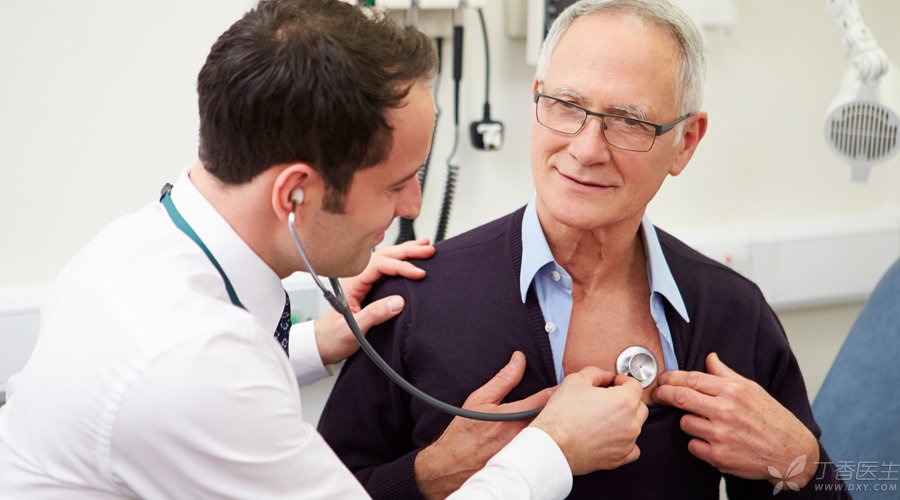
Cancer has become the leading cause of death in China, with morbidity and mortality rising year by year.
According to statistics, the number of new cancer cases in China is about 4.3 million each year, and more than 2.8 million people die of cancer every year.
In other words, in China, more than 11,700 people are diagnosed with cancer every day and more than 7,700 people die of cancer every day.
Of course, there are many reasons behind this, some of which cannot be resisted by personal forces, such as aging population or environmental pollution.
However, this does not mean that we are completely powerless in the face of cancer.
If we do something a little ahead of time, the result may be completely different.
In January 2018, the American Cancer Society published an article to study the national big data of the United States over the past 40 years, and proposed that through various medical efforts, the incidence and mortality of cancer in the United States have decreased significantly.
By learning from the relevant experience of the United States, we will keep ourselves and our families as far away from cancer as possible.
Research shows that lung cancer, prostate cancer, breast cancer and colorectal cancer account for nearly half of all cancer deaths, reaching 45%.
These four cancers, together with cervical cancer, which has a great impact on women’s health, are the five major killers of all cancers.
But there are actually ways to prevent these five cancers!

1. Lung cancer: Quit smoking and do low-dose CT screening.
Lung cancer is the cancer with the highest incidence rate in both China and the United States.
Smoking is the most important risk factor for lung cancer. Through nationwide tobacco control efforts, the smoking rate in the United States has decreased year by year. In the 1960s, the smoking rate in the United States was 42%, and now it has dropped to 15.2%.
Therefore, the incidence rate of lung cancer in the United States is also decreasing year by year, and the smoking cessation rate of men in the United States is obviously better than that of women, so the incidence rate of lung cancer in men in the United States is twice as fast as that of women.
It can be seen that quitting smoking plays an important role in reducing the incidence of lung cancer.
It is not enough to quit smoking alone, but also to do a good job of cancer screening in advance.
Through early screening and timely treatment, the cure rate of lung cancer can be effectively improved.
If you are over 55 years old and smoke more than 30 packs in a year, you need to have a low-dose CT screening for lung cancer every year.
2. Colorectal cancer: Pretreatment of colorectal adenoma
Colorectal cancer is the top three cancer incidence rate for both men and women.
In fact, colorectal cancer can significantly reduce the incidence rate and improve the cure rate through effective screening.
After reaching the age of 20, you need to consult a doctor to assess your risk of colorectal cancer.
After the age of 50, it is best to do stool occult blood test every year and colonoscopy every 10 years.
Through these examinations, if colorectal adenoma can be found in time, the occurrence of colorectal cancer can be effectively blocked through timely treatment, thus reducing the incidence of colorectal cancer.
3. Prostate cancer: PSA is an effective tumor marker
For men, prostate cancer is the second largest cancer.
What many people do not know is that if prostate cancer can be found early and through effective treatment, the 5-year survival rate of prostate cancer can reach as high as-99%!
Although the medical profession has been debating how to screen prostate cancer and is constantly revising relevant suggestions, in the latest article in the United States, a test method is proposed:
[Prostate cancer mortality in the United States has dropped 52% in the past 20 years or so, largely due to PSA (Prostate Specific Antigen) examination.]
Therefore, it is recommended that all men over 50 years old should check PSA every 2 ~ 4 years.
However, if there are male relatives in the family who have had prostate cancer, it is better to have regular examinations at the age of 40 in advance.
4. Breast Cancer: Mammography Mammography Begins after 40 Years Old
Breast cancer is the cancer with the second fatality rate for women.
However, through early detection and treatment, the survival rate of breast cancer can already reach 90%!
The method of screening for breast cancer is also very simple: after the age of 40, mammography mammography is performed once a year.
If your immediate family members have breast cancer patients, you should consult a doctor in time to assess your personal risk of breast cancer.
If there are no family risk factors, screening before the age of 40 is not recommended, because it will increase the risk of breast incision by mistake.

5. Cervical cancer: vaccination and screening
Cervical cancer is the cancer with the highest incidence rate of malignant tumors in the female reproductive system, and it is also the cancer with the second mortality rate for women aged 20-39.
However, cervical cancer screening has reduced the incidence of cervical cancer by 70%.
However, with the gradual popularization of HPV (human papillomavirus) vaccine, the incidence of cervical precancerous lesions has decreased by 40% every year.
For women to prevent cervical cancer, there are the following suggestions:
- Women who have had sex are screened for cervical cancer from the age of 21. For women aged 21-29, it is better to have TCT (exfoliative cytology examination) every 3 years. Women over 30 years old can have TCT + HPV examination every 5 years. At present, bivalent vaccines for cervical cancer are already on the market in China. Women aged 9-26 can effectively prevent cervical cancer by vaccinating HPV vaccines.
More than 40 years of data analysis in the United States show that it is precisely because of this that more than 2.378 million people in the United States have been freed from the clutches of cancer compared with the peak incidence of cancer.
Cancer is terrible, cancer treatment is painful, and the expenditure after getting cancer is also very huge.
However, if the prevention and screening work can be advanced, the risk of cancer can be greatly reduced and the cure rate of cancer can be improved.
It is not difficult to do this.
